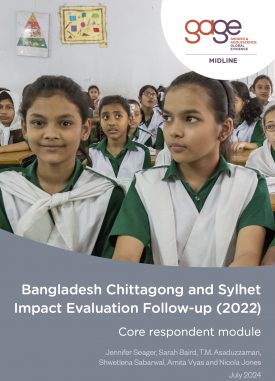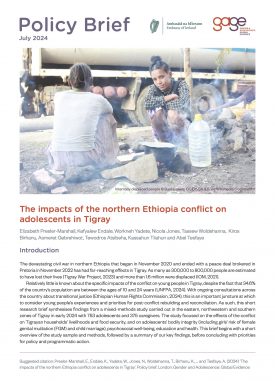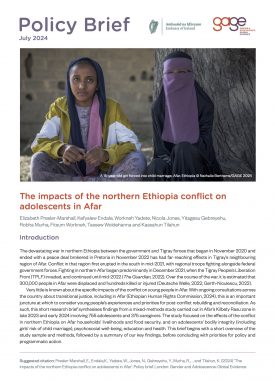Child marriage, while declining in most parts of the world, remains common in many communities – especially in countries beset by conflict and other humanitarian disasters. Indeed, all 10 of the countries with the highest rates of child marriage are considered fragile, and research has found that child marriage is one of the issues most sensitive to conflict. A growing body of evidence underscores that this is because although the drivers of child marriage tend to be similar across development and humanitarian contexts – and revolve around physical and economic insecurities and deep-seated gender norms – fragility, conflict and disaster augment concerns and can increase the risk of child marriage.
Buoyed by evidence that the practice has intergenerational costs to families, communities and national economies, child marriage has risen steadily up the development agenda in the 25 years since the Beijing Declaration highlighted its cost to girls. However, even as the contours of humanitarian crises have continued to evolve, with more people displaced and for longer periods of time than since the second world war, the humanitarian sector has been slower to embrace ending child marriage as necessary for progress. Two years on from the Global Compact on Refugees, and as the COVID-19 pandemic threatens to undo decades’ worth of progress towards eliminating child marriage, it is more important than ever that the global community refocus its efforts to support the capabilities of refugee and stateless adolescents – and foster refugee self-reliance – by stepping up efforts to ensure that they are not married as children.
This report begins with a brief overview of the evidence base. It then describes the sample and methodological approach used by Gender and Adolescence: Global Evidence (GAGE) to explore the drivers of child marriage in humanitarian settings and how tailored policy and programming might be brought to bear to reduce it. We first lay out the high-level drivers of child marriage – disentangling economic drivers, gender norms, and drivers related to crisis. We then explore the diverse views of the actors involved in the marriage decision-making process, looking at preferences through their own eyes and seeking solutions in their own narratives. The report concludes with priority recommendations for programming, policy, and research and evaluation.
Suggested citation
Presler-Marshall, E., Jones, N., Alheiwidi, S., Youssef, S., Abu Hamad, B., Bani Odeh, K., Baird, S., Oakley, E., Guglielmi, S. and Małachowska, A.(2020) Through their eyes: exploring the complex drivers of child marriage in humanitarian contexts. Report. London: Gender and Adolescence: Global Evidence. (https://www.gage.odi.org/publication/through-their-eyes-exploring-the-complex-drivers-of-child-marriage-in-humanitarian-contexts/)


